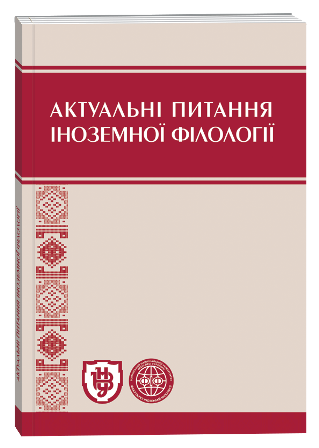GRAPHIC SIGNS IN VIRTUAL DISCOURSE
Keywords:
discourse, virtual discourse, graphic signs, virtual communication, computer, virtuality, smile, hashtagAbstract
The understanding of virtual discourse, its distinctive features in relation to the real discourse are defined in this article. Virtual discourse is defined as communication via/through the Internet using technical means: a computer, a smartphone, a tablet, and others. The main focus is on graphic signs as an obligatory component of virtual discourse. The history of the appearance of graphic signs that are most often used in virtual communication is traced: emoticons, "at" ligatures, hashtags. Interpretations of graphic signs in lexicographic sources are given, the semantic meaning of smiles is systematized. A different translation of smiles in different languages is presented. The functional purposefulness of the use of smiles, ligatures, hashtags, and other graphic symbols is noted, among which the various punctuation marks, are frequent. Punctuation marks (interpuntems), which include a comma, a period, a semicolon, twodots, a dash, ellipsisas a skip sign, an exclamation mark and question marks, quotes, brackets, etc., acquire symbolic values in the virtual discourse. Combinations replace lexical units with an appropriate semantic and / or pragmatic meaning. Graphic signs of different types are used in complexes, which requires special knowledge of their use. The use of various graphic signs in virtual discourse requires special (virtual) competence from users. Graphic signs will be informative for programmers, hackers, system administrators, etc., but not informative for teapots, lamers, including other members of virtual discourse. The use of graphic signs is interpreted in this article on the actual material (fragments of virtual communication from the work of B. Wood "Die Prophetin") In conclusion (after appropriate results are presented), prospects for further scientific research are indicated.
References
Arutiunova, N. D. 1998. Bolshoi entsyklopedycheskyi slovar. Moskva.
Demiankov, V. Z. 1982. “Anhlo-russkye terminy po prykladnoi linhvistyke y avtomatycheskoi pererabotke teksta”. Metody analyza teksta 39:7.
Dyskurs yak kohnityvno-komunikatyvnyi fenomen. Kh.: Konstanta, 2005.
Karasyk, V. Y. 2000. “O typakh dyskursa”. Yazykovaia lichnost: institutsionalnyi i personalnyi diskurs 7: 5–20.
Kheshtek.https://uk.wikipedia.org/wiki/%D0%A5%D0%B5%D1%88%D1%82%D0%B5%D0%B3
Lutovynova, O. V. 2009. “Virtualnyi diskurs kak odno iz napravleniy v issledovanii kiberprostranstva”. Vestnyk Moskovskoho hosudarstvennoho oblastnoho universiteta. Seryia: Linhistyka 1:26–32.
Selivanova, O. O. 2006. Suchasna linhvistyka: terminolohichna entsyklopediia. Poltava: Dovkillia.
Smailhttps://uk.wikipedia.org/wiki/%D0%A1%D0%BC%D0%B0%D0%B9%D0%BB
Ulianchenko, O. V. Linhvokomunikatyvni osoblyvosti kompiuternoho dyskursu. https://essuir.sumdu.edu.ua/bitstream/123456789/26558/1/Ulyanenko_dyskurs.pdf
Vitrualnisthttps://uk.wikipedia.org/wiki/%D0%92%D1%96%D1%80%D1%82%D1%83%D0%B0%D0%BB%D1%8C%D0%BD%D1%96%D1%81%D1%82%D1%8C.
@ https://uk.wikipedia.org/wiki/@
Wood Barbara. 1995. “Die Prophetin”. Verlag: Wolfgang Krüger Verlag Erscheinungsjahr.







